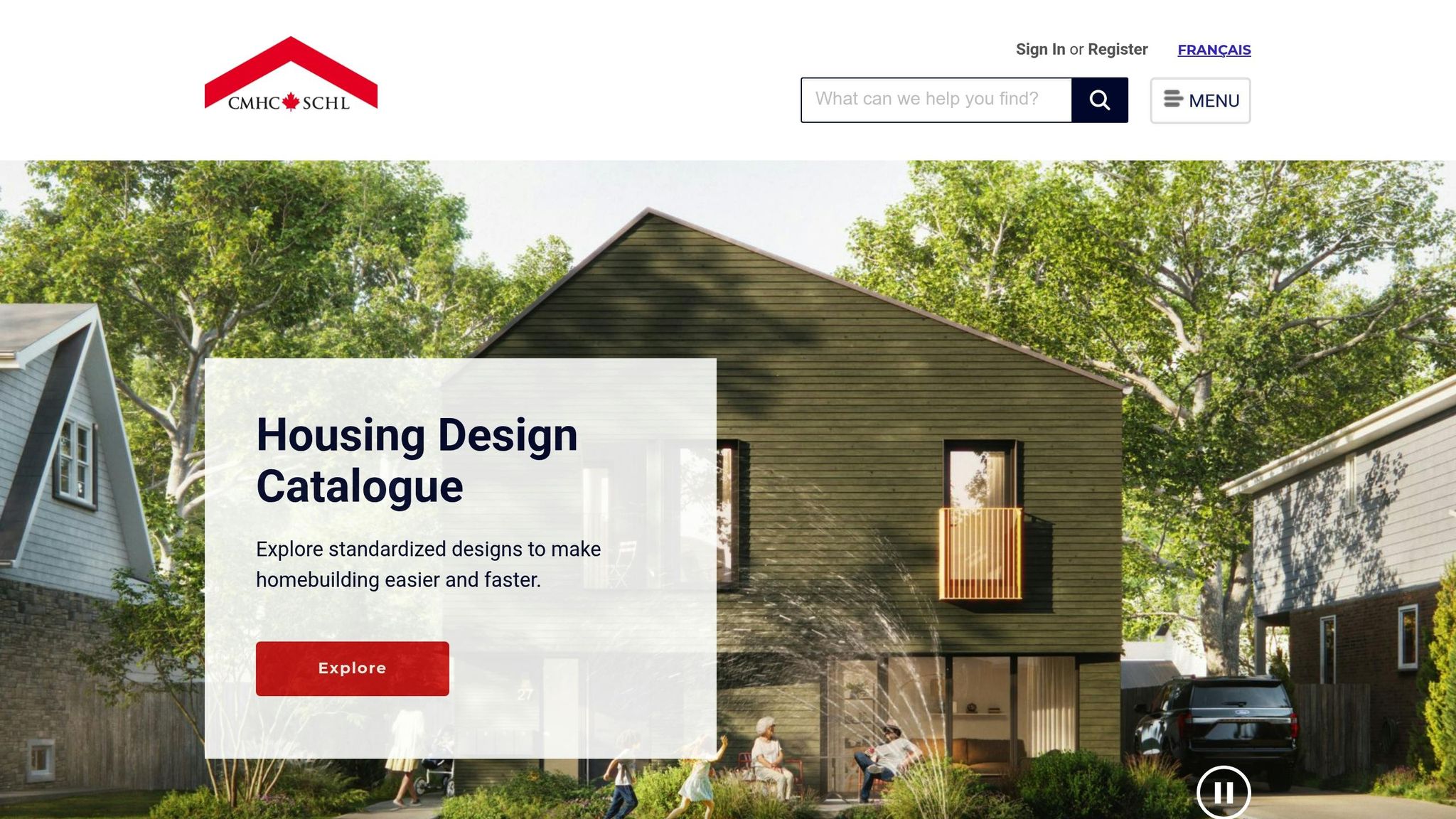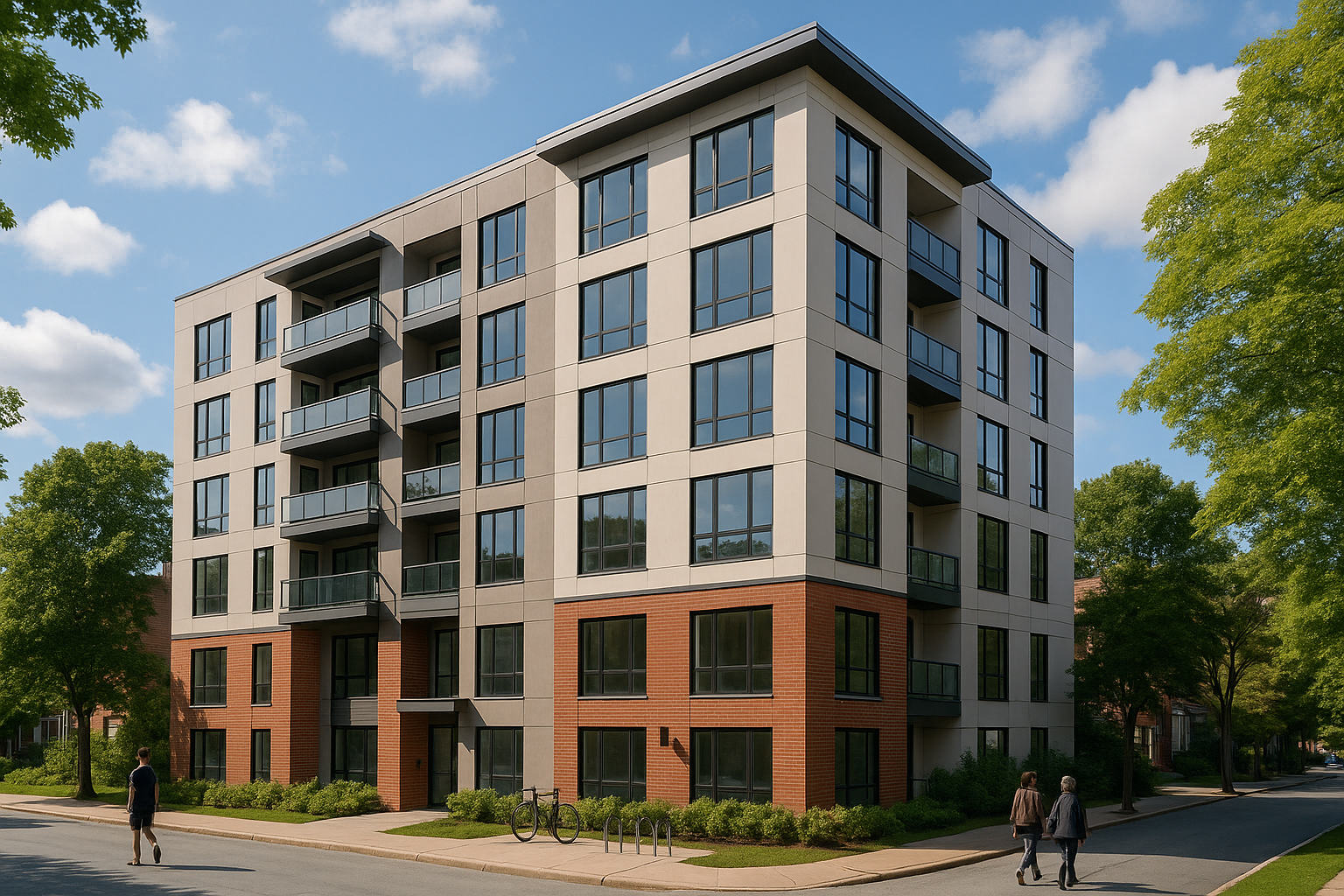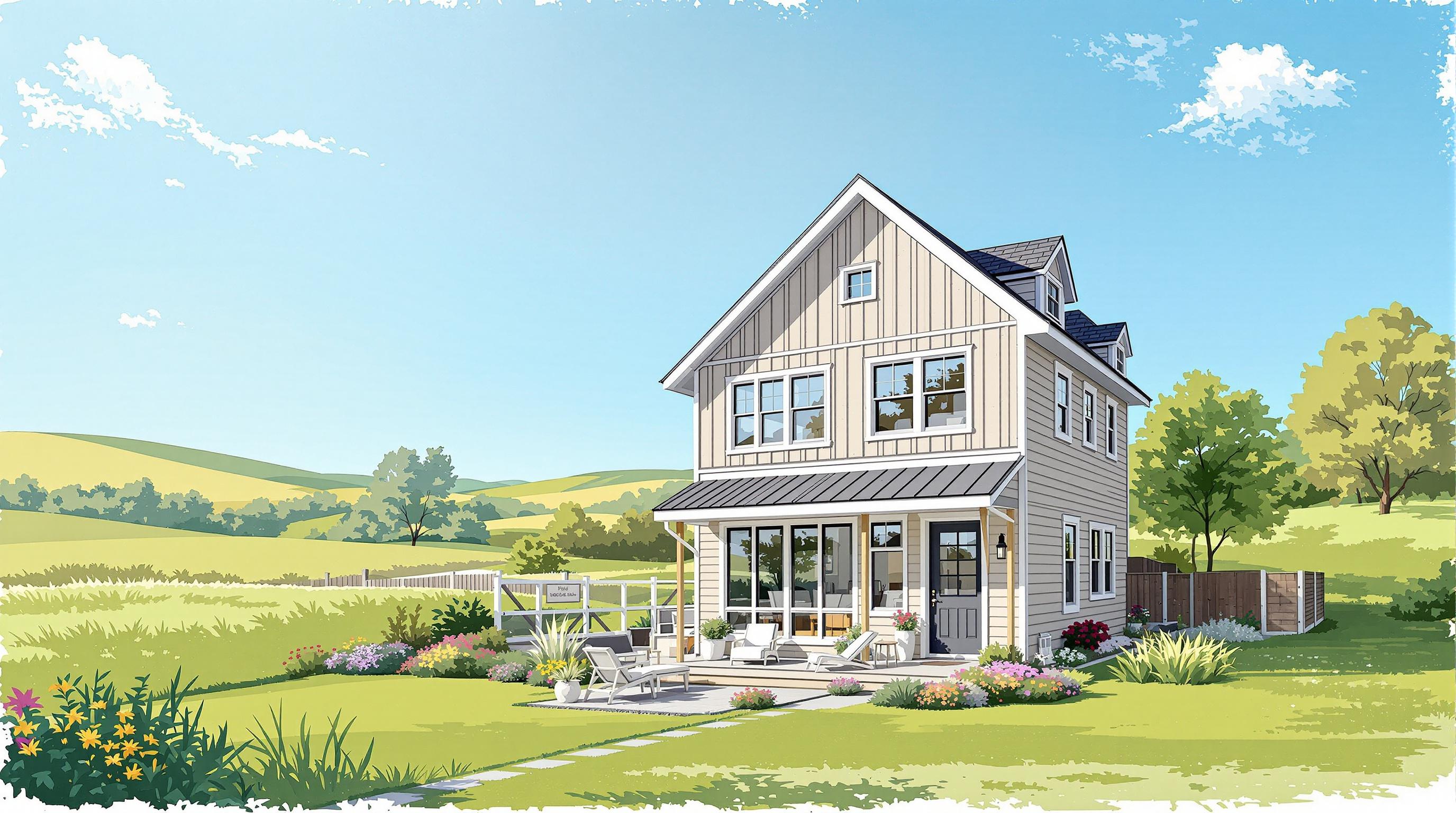In Nova Scotia, the resale value of your multi-unit property hinges on three main factors: construction quality, location, and tenant expectations. Poor construction choices can lead to financial losses, while smart decisions during the building phase can maximize long-term returns. Here’s what you need to know:
- Construction Quality: Prioritize energy-efficient systems (e.g., heat pumps, triple-pane windows) and durable, modern finishes like quartz countertops and engineered hardwood flooring. These features reduce operating costs and attract tenants willing to pay premium rents.
- Location: Properties near Halifax or within a 90-minute radius are in high demand. Proximity to jobs, schools, and amenities can significantly boost property value.
- Tenant Expectations: Modern amenities like in-unit laundry, secure parking, and smart home technology are no longer optional but expected by renters.
Choosing an integrated design-build approach with fixed-price contracts ensures better quality control, avoids costly delays, and protects your investment. With Nova Scotia’s housing market seeing steady growth - average home prices in Halifax rose to $603,650 in 2025 - building with a focus on longevity and market demands is critical for maximizing resale value.
Investment Properties For Sale in Halifax are No Longer Cash Flowing
What Affects Resale Value in Nova Scotia
If you're investing in property in Nova Scotia, understanding what drives resale value is crucial. Three key factors play a major role: construction quality, location, and how well the property aligns with current tenant expectations. Let's break down each of these to see how they impact your investment.
Construction Quality: The Backbone of Long-Term Value
The materials, systems, and methods you choose for construction directly affect everything from durability to tenant satisfaction - and ultimately, resale value. One major consideration is energy efficiency. For example, properties built to CMHC MLI Select standards are about 40% more energy efficient than those meeting only the basic building code. While these higher standards might cost around $200,000 per unit compared to $160,000 for standard construction, the benefits are clear: lower operating costs and stronger appeal to renters.
Another critical aspect is quality control. Professional engineering inspections at key construction stages help identify and prevent defects or mechanical issues that could hurt rental income or resale value later. And don’t overlook the importance of premium finishes. Features like quartz countertops, engineered hardwood flooring, and durable fixtures not only reduce maintenance costs but also make properties more attractive to buyers, minimizing the need for early renovations.
Location Impact: Why It Matters
In Nova Scotia, where your property is located significantly influences its value. Areas like the Halifax Peninsula are particularly desirable due to strong job growth, reputable educational institutions, and a limited supply of land for new development. These factors drive demand, especially for well-designed two-bedroom units that can command competitive rents.
Secondary markets, such as parts of Dartmouth and surrounding Halifax communities, also present solid opportunities. While these areas may not have the same level of demand as prime locations, they still offer steady rental markets. For properties outside the urban core, proximity to employment hubs and economic activity becomes even more critical. Conducting thorough market research is key to identifying the strengths and challenges of each area.
Market Demand and Tenant Expectations
The rental market is evolving, and tenant preferences are shaping demand more than ever. Modern amenities are a major draw for renters, helping properties stand out and even allowing for premium rent levels. Features like in-unit laundry, secure parking, and pet-friendly designs are increasingly sought after.
Integrated Design-Build vs. Traditional Construction Methods
In Nova Scotia, the choice of construction method can significantly affect your property's resale value. Opting for the right approach not only simplifies project delivery but also protects the long-term value of your investment. Selecting an integrated design-build team instead of juggling multiple contractors can be the difference between a seamless, profitable project and one plagued by delays and unexpected costs.
Single Team Coordination vs. Multiple Contractors
Traditional construction often involves hiring separate professionals for planning, architecture, engineering, and construction. This fragmented setup increases the risk of miscommunication, which can lead to budget overruns ranging from 30–60% and project delays - both of which can negatively impact your investment. These overruns may force you to cut corners on finishes or systems that tenants and future buyers expect, ultimately reducing the property's appeal.
An integrated design-build approach, on the other hand, brings all key players - planners, architects, engineers, and construction teams - under one roof. This unified process reduces miscommunication and speeds up decision-making. The financial benefits are clear: property owners can save an average of $47,000 by avoiding coordination inefficiencies. These savings can be redirected toward premium finishes or energy-efficient features, which not only enhance tenant satisfaction but also boost resale value.
This cohesive approach also lays the groundwork for greater financial predictability, which is explored further in the next section on fixed price guarantees.
Fixed Price and Timeline Guarantees vs. Cost-Plus Uncertainty
Traditional cost-plus contracts often leave property owners exposed to unpredictable expenses and extended timelines. These projects frequently run over budget and behind schedule, delaying rental income and increasing carrying costs. Such setbacks can weaken your property's market position, especially as newer, on-time projects enter the scene.
In contrast, fixed-price contracts and timeline guarantees provide much-needed financial clarity. By locking in costs before construction begins, you gain control over your budget and ensure your investment stays on track. This predictability allows for better financial planning and protects your expected returns.
Timeline guarantees are equally critical for maintaining resale value. Properties that begin generating rental income on schedule maintain their competitive edge and appeal to future buyers as reliable income-generating assets. Some integrated builders even include financial penalties - up to $1,000 per day - for delays, ensuring projects stay on track. Fixed-price contracts and strict timelines not only safeguard your budget but also prevent potential losses in rental income, which, for a typical fourplex, could amount to approximately $8,800 per month.
These clear financial terms set the stage for enhanced quality control, discussed in the next section.
Quality Control Systems vs. Hope-for-the-Best Approaches
In traditional construction, quality control often relies on basic inspections and the hope that various contractors will meet consistent standards. This approach can leave room for errors, resulting in defects or mechanical issues that decrease rental income and hurt resale value.
Integrated teams take a more systematic approach to quality assurance. Through multiple professional engineering inspections and a single-point warranty, they ensure accountability and reduce the likelihood of costly repairs. This multi-layered verification process not only prevents defects but also reassures future buyers about the property's durability.
Warranty coverage also varies significantly. With traditional methods, property owners often have to navigate multiple contractor warranties, making issue resolution complicated. In contrast, integrated builders typically offer comprehensive warranties - such as two years of coverage for all construction work - providing a single point of accountability. This streamlined approach simplifies maintenance and builds trust with potential buyers.
sbb-itb-16b8a48
How to Boost Your Property's Resale Value
Making thoughtful construction and design choices today can significantly influence your property's future market value. Smart decisions not only attract premium tenants and reduce operating costs but also position your property as a standout investment when it's time to sell.
Energy Efficiency Features and CMHC Benefits

Energy-efficient upgrades are a win-win: they appeal to tenants and deliver long-term savings. By lowering operating costs and creating comfortable living spaces, these features set your property apart.
Take heat pump systems, for example. In Nova Scotia, they're a popular choice for multi-unit properties. A six-unit property at 15 Shore Road in Harbourview features ductless heat pumps in each of its two-bedroom units, contributing to low maintenance and a strong rental history [1]. Similarly, the historic property at 446 St George Street in Annapolis Royal has energy-efficient heat pumps in all four rental units, lowering utility costs for tenants while keeping maintenance manageable for the owner [1].
Pairing heat pumps with triple-pane windows enhances energy efficiency even further. These windows minimize energy loss and block outside noise, creating living spaces that tenants appreciate and future buyers value.
For properties aiming to qualify for CMHC MLI Select financing, energy-efficient features can be a game-changer. The program offers 95% financing with a 5% down payment and a 50-year amortization, which significantly broadens the pool of potential buyers. Documented energy efficiency can justify higher rents and reduce vacancy rates, making it a smart investment for both current owners and prospective buyers.
Smart Home Technology and Quality Finishes
Modern technology and high-quality finishes are becoming essentials for attracting tenants and buyers alike.
Smart home features are now an expectation. Keyless entry systems enhance security, while smart thermostats help tenants manage heating costs and allow owners to monitor systems remotely. Video doorbells add convenience and extra security, appealing to both tenants and potential buyers.
Energy Star-rated appliances - like refrigerators, stoves, dishwashers, and microwaves - are another draw. They lower utility bills and create a move-in-ready experience. In-unit washers and dryers, often a deciding factor for tenants, answer the common question: "Does it come with laundry?"
Premium finishes also make a big impact. Durable quartz countertops resist stains and scratches, maintaining their look over time. Engineered hardwood flooring offers both durability and style, standing out compared to other options. These upgrades not only attract higher-quality tenants who are likely to stay longer but also help preserve the property’s condition, reducing turnover and maintenance costs.
Flexible Design for Changing Market Needs
A property that can adapt to shifting market demands is better positioned for long-term success. Flexible design ensures your building remains competitive as tenant preferences evolve.
Adaptable unit layouts cater to different lifestyles. Open-concept designs appeal to younger renters while still providing defined spaces for home offices. Smart storage solutions meet the needs of tenants across various age groups.
Scalable utility systems are another forward-thinking feature. Electrical panels that can handle future electric vehicle chargers or additional appliances help avoid costly rewiring. Similarly, plumbing provisions for extra fixtures save money down the line as tenant needs change.
Universal design elements - such as wider doorways, step-free entrances, and accessible bathrooms - broaden your tenant pool and attract buyers who value long-term usability. These features are especially important as the population ages, and incorporating them during construction is far more cost-effective than retrofitting later.
Diverse unit configurations within a building provide flexibility and diversify income streams. Offering a mix of unit types helps meet varied market demands and appeals to buyers seeking a property with multiple income options.
For instance, the newly built two-bedroom chalets at 144 Northwinds Lane in Parkers Cove showcase this kind of flexible thinking. With spray foam insulation and electric heat for efficiency, these units are also tailored to serve the tourism market [2]. This versatility allows the property to adapt to different market segments, maximizing its long-term resale value.
Protecting Your Investment's Long-Term Value
Making smart decisions from the very beginning is key to safeguarding the long-term value of your property. Nova Scotia's housing market continues to thrive, with average home prices reaching $467,148 in August 2025 - a 7.1% increase compared to the previous year. In Halifax, the numbers are even higher, with average home prices climbing to $603,650, reflecting a 5.8% annual rise. These trends highlight the potential for significant returns when properties are built with a strategic approach [4].
The data underscores strong market growth. Nova Scotia remains a seller’s market, as shown by a Sales-to-New-Listings Ratio of 69% [4]. For rental properties, the outlook is just as promising. In Halifax, the average monthly rent for a two-bedroom unit reached $1,628 in 2023, marking an 11% increase [4]. These figures make it clear - building with a focus on quality and longevity is essential for maintaining and increasing your property’s value over time.
Properties constructed to high standards are the ones that thrive in such a competitive market. On the other hand, using fragmented construction methods can introduce risks that may undermine your investment's value. An integrated design-build approach helps mitigate these risks by bringing all professionals together from the start. This ensures better coordination, fixed pricing, and guaranteed timelines. More importantly, it delivers consistent quality - something future buyers will recognize and pay a premium for. To protect your investment, it’s crucial to take proactive steps during the planning and construction phases.
Action Steps for Property Owners
Choose builders who offer fixed-price contracts and timeline guarantees. If a builder isn’t willing to commit to a firm price and completion date, you’re essentially taking a gamble with your investment. Look for companies that provide regular updates, such as daily photos, and conduct multiple quality inspections. Transparency during construction builds trust and boosts confidence in resale value.
Focus on energy efficiency from the outset. Features like heat pumps, triple-pane windows, and Energy Star appliances aren’t just appealing to tenants - they’re major selling points for buyers. Properties that qualify for CMHC MLI Select financing, which allows buyers to put down as little as 5% with 50-year amortizations, can significantly expand your pool of potential buyers.
Incorporate adaptable design elements. Wider doorways, step-free entrances, and flexible unit layouts are small additions during construction that can save future buyers from costly retrofits. Also, ensure your electrical system can support future needs, like EV chargers or additional appliances.
Keep detailed records of construction specifications and warranties. Quality documentation not only provides peace of mind but also justifies higher resale prices. Buyers are willing to pay more when they have proof of a property’s superior construction.
Plan with an exit strategy in mind. If you’re building a fourplex today, consider how a future owner might want to expand it to six or eight units. Designing utilities and site layouts to accommodate potential growth can add long-term value, even if you don’t plan to expand it yourself.
Nova Scotia’s real estate market continues to show strong investor confidence, with property ownership growing by 2.1% among individuals and 3.6% among businesses in 2022 [3]. Recent interest rate cuts since mid-2024 have also eased borrowing conditions, likely drawing more buyers into the market [4].
Ultimately, the resale value of your property is determined not at the point of sale but during the construction phase. By making thoughtful decisions now that align with future buyer expectations, you position your property for strong appreciation and a seamless resale process down the road.
FAQs
How does the construction method affect the resale value of a property in Nova Scotia?
The construction method you decide on can greatly influence your property's resale value in Nova Scotia. Choosing an integrated design-build approach - where one team oversees the entire project - can streamline the process, cut down on delays, and deliver higher-quality outcomes. This efficiency often translates into stronger long-term value for your property.
On the other hand, traditional methods that involve juggling multiple contractors can lead to miscommunication, unexpected delays, and higher chances of cost overruns. These issues can hurt your property's market appeal and resale potential. Starting with the right method is essential to safeguarding your investment.
What energy-efficient features should I include in my new build to boost its long-term value in Nova Scotia?
To boost the long-term value of your new build in Nova Scotia, think about incorporating energy-efficient upgrades that meet modern standards and take advantage of local incentives. Features like high-performance windows, advanced air sealing, and better insulation can help lower energy use and improve overall efficiency.
Starting April 1, 2025, Nova Scotia will adopt the National Energy Code of Canada for Buildings (NECB) 2020, which comes with stricter energy performance requirements. Preparing for these changes now can ensure your property meets future regulations and remains competitive.
You can also benefit from rebates offered by Efficiency Nova Scotia, which cover up to 80% of energy-efficient upgrades for multi-unit residential rental properties. These improvements not only cut operational costs but also make your property more attractive to buyers or renters, enhancing its market appeal and long-term value.
Why is choosing a location within a 90-minute radius of Halifax important for resale value?
When choosing a property within a 90-minute drive of Halifax, you're setting yourself up for better resale potential. Halifax serves as Nova Scotia's economic and cultural centre, boasting strong rental demand, consistent population growth, and a robust job market. Being near this vibrant area means access to top-notch amenities, reliable infrastructure, and a steady stream of potential tenants - all factors that make your property appealing to future buyers.
On top of that, properties closer to Halifax typically see higher demand and stronger price growth compared to those in more remote areas. By investing within this radius, you widen your reach to both buyers and renters, boosting your property's value and attractiveness in the long run.



